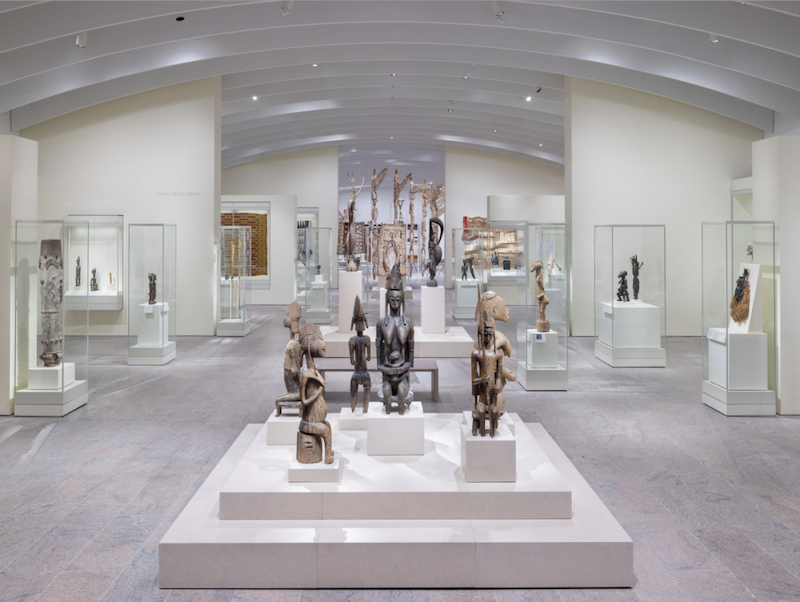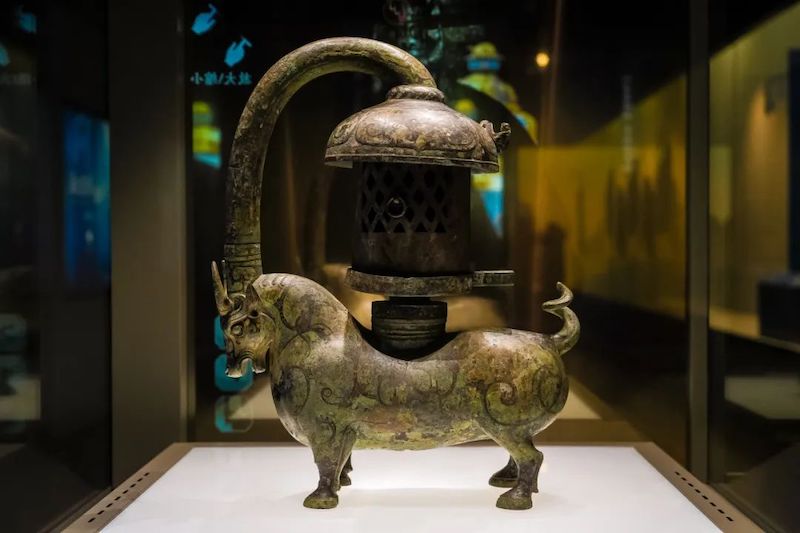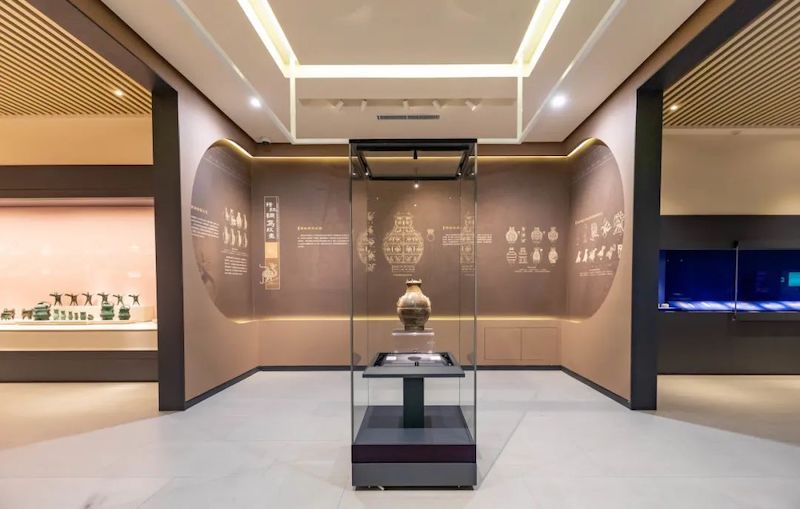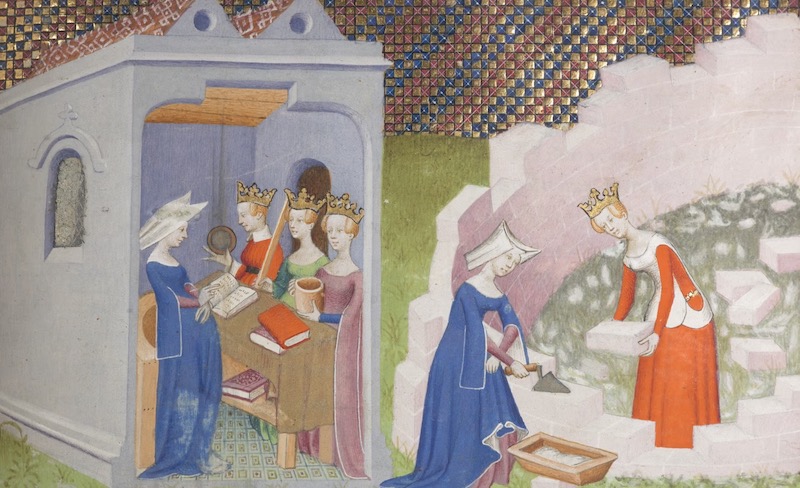
After more than four years of renovation, the Rockefeller Hall of the Metropolitan Museum of Art in New York, USA, has recently opened to the public with a brand new look. This exhibition area is a new exhibition hall for the museum's collections of African art, ancient American art, and Oceanian art, presenting nearly 1,800 works spanning five continents and covering hundreds of cultures.
The story of the Michael C. Rockefeller Wing, which has been closed for renovation since 2021, dates back to the early 20th century, when the Met acquired its vast collection of pre-Columbian art and trucked it across Central Park to the American Museum of Natural History, where it was thought to be mixed with mineral specimens and dinosaur bones. “Primitive” art is art without dates, created by unnamed craftsmen in the wide world.

The renovated Rockefeller Wing of the Metropolitan Museum of Art
By the 1950s, Nelson A. Rockefeller, then an avid art collector and Met trustee, tried to interest the museum by exhibiting his extensive Pre-Columbian and African collections. When he failed to convince the Met, he opened his own museum in 1957, the Museum of Primitive Art, in a modest townhouse on West 54th Street, directly behind what is now the Museum of Modern Art. Nelson’s mother, Abby Aldrich Rockefeller, was one of the founders of MoMA.

The Museum of Primitive Art, located in a townhouse on West 54th Street in Manhattan, was founded by Nelson A. Rockefeller and opened in 1957.
Twelve years later, the museum’s collection included a significant number of Pacific Island and Australian art collected by Rockefeller’s son, Michael Rockefeller, a budding ethnologist who died in New Guinea in 1961 at the age of 23. The Met changed its mind, and under the leadership of its innovative director, Thomas Hoving, it agreed to acquire the collection and build a 40,000-square-foot addition to house it. The Michael C. Rockefeller Wing opened in 1982.

In 1982, the Metropolitan Museum of Art added the collection of Nelson Rockefeller and his son Michael Rockefeller's collection of Pacific Island and Australian art to its galleries.
Today, the renovated Rockefeller Hall has been transformed from a cramped and crowded space to a new and refreshing space. It is reported that the renovation cost $70 million and was designed by Kulapat Yantrasast of WHY Architecture in collaboration with Beyer Blinder Belle and the Metropolitan Museum of Art's design department. The original floor space of the hall was retained, but the floor plan was changed. The exhibits that are loved by the audience have returned in a brand new way, equipped with multimedia features, customized films, and updated exhibition labels to present the exhibits in a richer way. At the same time, the museum has also deepened the connection between art and the space it is in in the exhibition hall-the design elements of each exhibition area echo and pay tribute to the architectural styles of various places.

African Art Exhibition Area
In the African Art section, the new exhibition will guide visitors to appreciate the museum's collection of sub-Saharan African art in a new way. Artworks from medieval Africa to the present day are presented here. Rows of horizontal, rib-like grilles extend from the towering ceiling, paying tribute to one of Africa's most famous buildings, the Great Mosque of Djenné in Mali. When visitors walk in here, they feel as if they are in Africa, surrounded and embraced by Africa. In the center is a grassland covered with wood carvings, flanked by rows of private exhibition spaces, extending to the left into the depths of the side hall.

Africa exhibition area, a statue from Mali
At the entrance is a tall wooden male statue, one of the first pieces Nelson Rockefeller acquired around 1958. The statue dates from the 14th to 17th century and was created by a Dogon artist in an arid, rocky region of Mali. He stands with his long, slender arms raised straight up to the sky. To the right is another male statue, also from Mali, but from an earlier era and with a very different style and emotion. This clay figure is seated, with his body curled up, as if trying to sleep, meditate or hide. Recent research suggests that this unique style of pottery was created by a woman.

Seated clay figure, from the Middle Niger civilization (present-day Mali), 13th century
The African section is centered around one or more outstanding single works, linking together works from different cultures. Then there are a series of mini-exhibits themed around Central Africa, displaying masterpieces one after another. A fan-shaped Tsesah heraldic mask looks like solidified flames; a palm oil-drenched Fang female sacred figure is slender like a wrestler but plump like a baby.
In the West African section, a beautiful 16th-century ivory face, shaped like a pendant, glows like candlelight. The sculpture, from what is now Nigeria and long considered one of the Met’s signature masterpieces, depicts Idia, a revered Queen of Benin. The section ends with a treasure trove of Ethiopian liturgical objects, including a Gospel book and a splendid, though ancient, painting of the Virgin and Child. Then, visitors enter another cultural world, that of the Americas and Oceania.

View towards the Benin gallery, with the ivory pendant mask of Queen Idia in the center

Fresco of the Madonna and Child, probably created in the Lake Tana region of Ethiopia, around 1800
The Ancient American Art section, with about 700 works at its core, focuses on artworks by indigenous artists from North, Central and South America and the Caribbean before 1600 AD. The section opens with some of the oldest artifacts in the collection. One is a nearly life-size Olmec head from Mexico, carved from sea-green jade and dating from 900 to 400 BC. Its features look human, but its eyes are cat-like. Another highlight is the new Ancient American Textile and Feather Arts Gallery, which showcases three millennia of fiber art.

Ancient American Art

Ancient American Art

Ancient American Art
The design of the exhibition hall draws inspiration from the architectural traditions of ancient America and incorporates the design of stone platforms to echo the layout of landmark buildings in Central America and the Andes, such as the encircling U-shaped structure of the temples on the north coast of Peru and the regular layout of square plazas in central Mexico.
Oceania’s vast geographical area covers almost one-third of the Earth’s surface, and the Oceania Art section celebrates the region’s diversity by showcasing artworks from 140 different cultures spanning more than 500 years.

Oceania Art Exhibition Area
The exhibition hall design in this area echoes the unique spatial sense of the region: the horizon, the vaulted sky, and the islands scattered in the vast ocean - these coordinates guide and shape life in this fascinating land. The newly designed visual axis layout highlights the dynamic exchange between adjacent island groups: to the north is a towering Asmat art installation, while to the south is the iconic roof of the Kwoma people bathed in natural light.

Torres Strait Islander mask, mid to late 19th century

Human mask woven by Asmat artists in southwestern New Guinea, mid-20th century
Whether concretely or symbolically, the Met’s directors are aware of the cultural relevance of the art for which they are responsible and work to situate these artworks within the history of art up to the present day.


